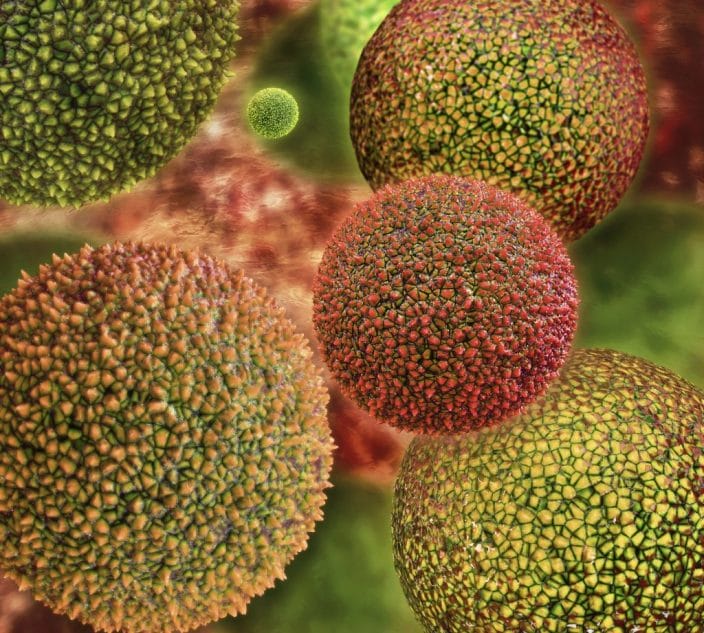One third of North Americans suffer from hay fever and an impressive 10 per cent of those have a related type of allergic reaction called Oral Allergy Syndrome. OAS is a so-called “cross-reaction” – since the proteins present in certain trees are structured similarly to the proteins in certain fruits and vegetables.
In most people, OAS is a relatively mild allergic response, and people who have it can eat the vegetables or fruits that cause inflammation and itchiness in their throat and mouths – as long as those foods are cooked.
The reason for this? OAS sufferers are only allergic to the “heat labile proteins” – the proteins in the fruit that get destroyed once exposed to heat.
This explains why the symptoms are confined to the mouth: “When you eat the fruit raw, it’s your own body’s heat that breaks down the protein, which is why the reaction doesn’t move beyond the mouth,” says Dr. Paul Keith, an associate professor of allergy and clinical immunology at McMaster University in Hamilton, Ontario.
So while a raw apple a day might keep the person with OAS away, she can eat a slice of apple pie without a problem. The same goes for vegetables. While celery or carrots and dip may make your lips puff up, a nice hearty vegetable soup will go down smoothly.
There are some tricks you can use to try to cheat nature – but they may not work for everyone. Dr. Bruce Mazer, director of the division of allergy and immunology at the Montreal Children’s Hospital and associate professor at McGill University in Montreal, suggests microwaving the fruit, like an apple, for a few seconds.
He also suggests sprinkling lemon juice on the raw fruit and letting it sit for a few minutes before eating. These tricks may help to break down those heat labile proteins while still allowing the fruit to be somewhat crisp. You can also simply try peeling the fruit first since most of the fruit’s proteins are in its peel. Of course, this would only help for fruits that have a peel and not for fruits like raspberries and strawberries.
Dr. Keith approaches management from a different angle. He suggests trying to better control the hay fever so that your body will no longer recognize the offending proteins, even in the related fruits and vegetables. This can be done by using saline nasal sprays to keep the nose clear, wearing glasses to protect the eyes, and keeping windows and doors closed to lessen exposure to pollens.






